Abstract
A newly synthesized human big gastrin (G34) that was prepared according to the revised structure and that contained less than 3% oxidized methionine residues was compared with synthetic human little gastrin (G17) for acid-stimulating activity and clearance in human subjects. Prolonged infusions of each type of gastrin revealed that the time required to approach stable plasma concentrations was much longer for G34 than for G17. The time course of plasma gastrin concentration could be described by one-compartment models with half-lives of 44 min for G34 and 8 min for G17. After rapid intravenous infusion, G34 produced a much larger total acid response than did an equimolar dose of G17, and the responses were directly proportional to the integrated plasma gastrin increments. During the third hour of prolonged intravenous infusions of G34 and G17, the exogenous dosage of G34 required to produce the same blood concentration of gastrin was only one-fourth that of G17. Equivalent blood concentrations of G34 and G17 were associated with similar rates of acid secretion. These results suggest that G34 is more potent than has been thought, that it has an activity similar to that of G17 and that it must not be ignored in estimating total acid-stimulating activity of circulating gastrins. The measurement of total carboxyl-terminal immunoreactive gastrin can produce a good estimate of total acid-stimulating activity.
Full text
PDF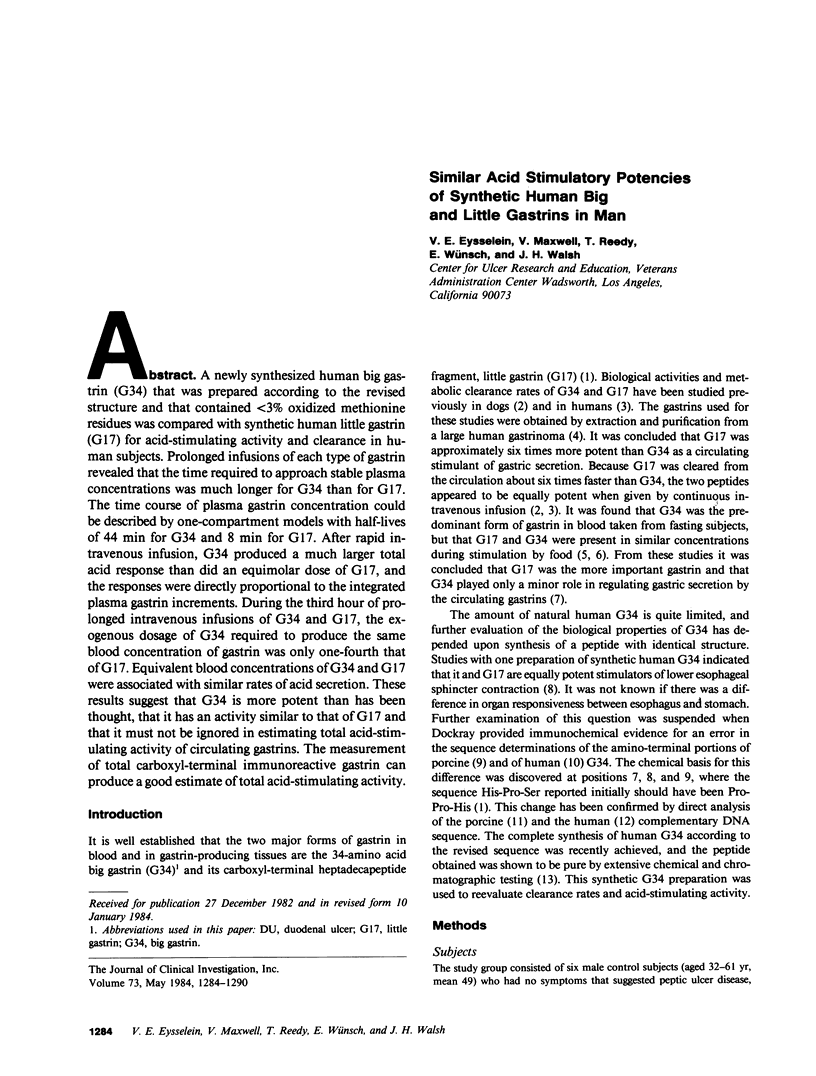
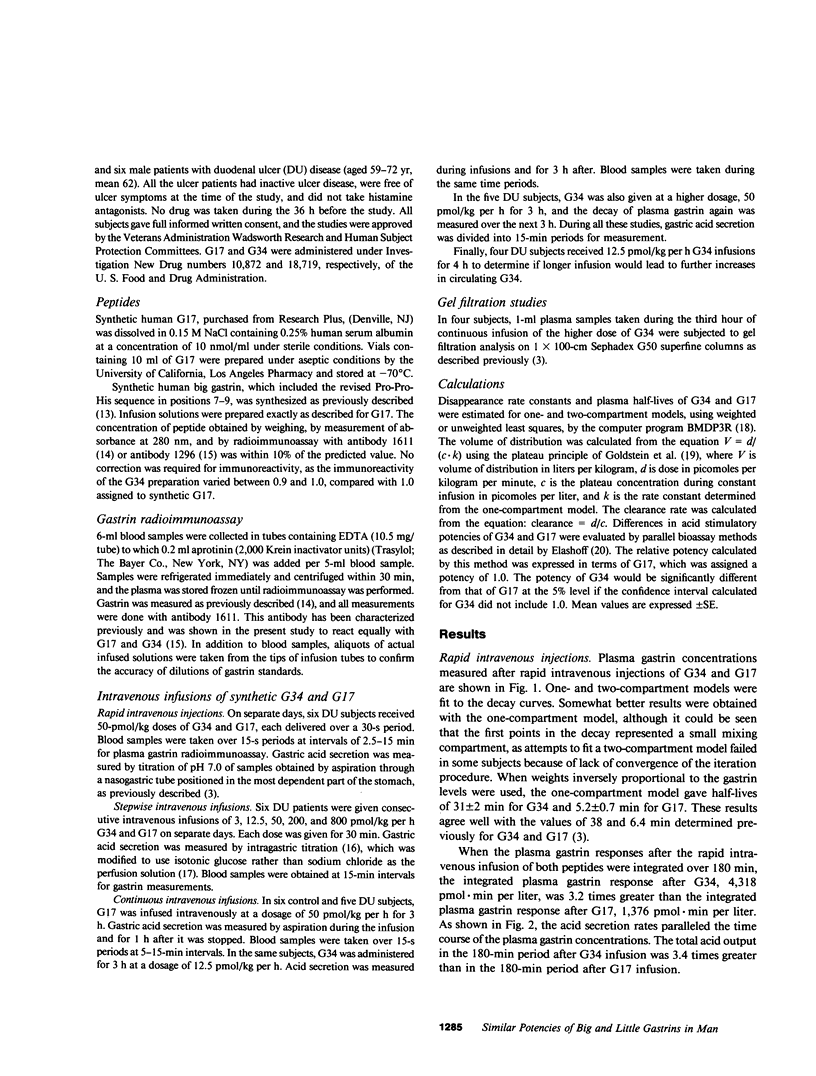
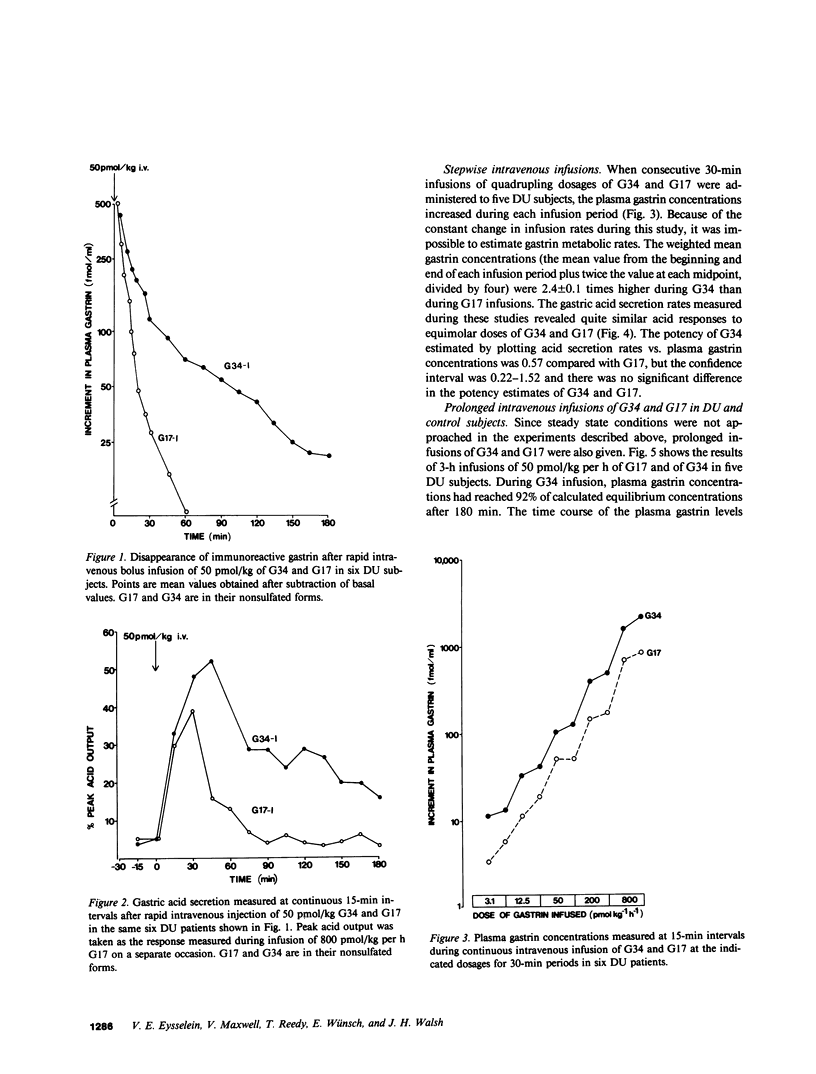
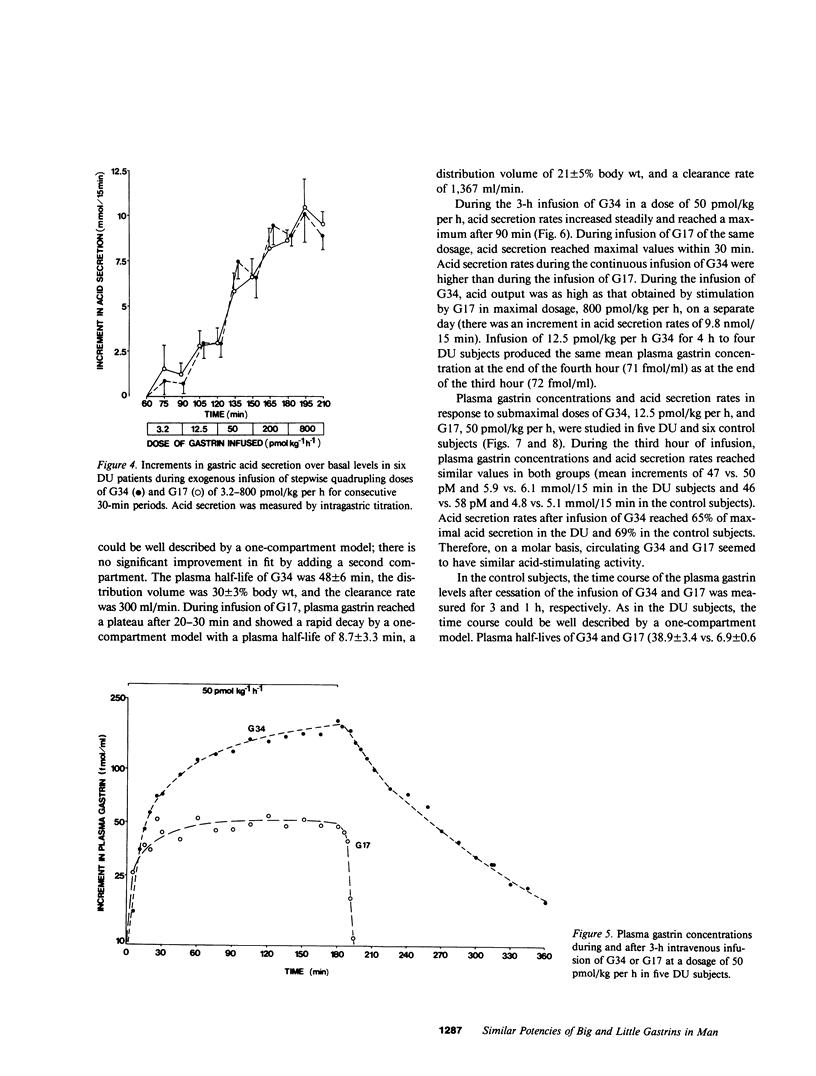
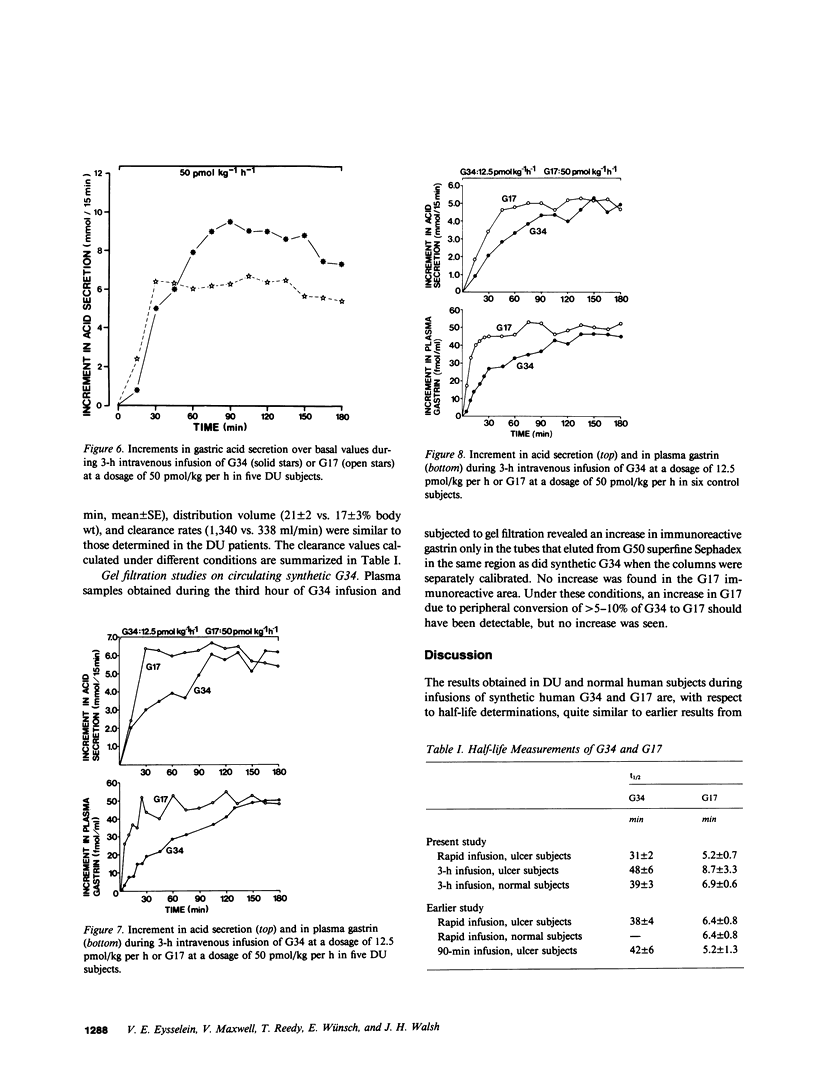
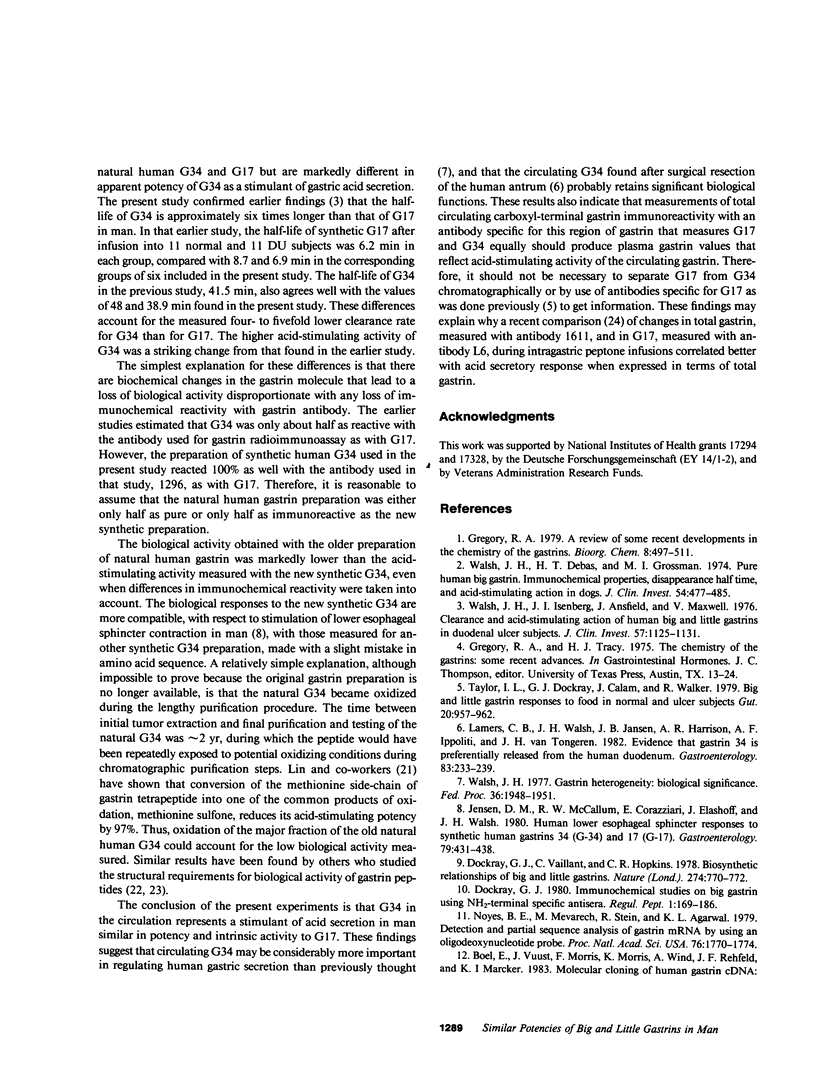
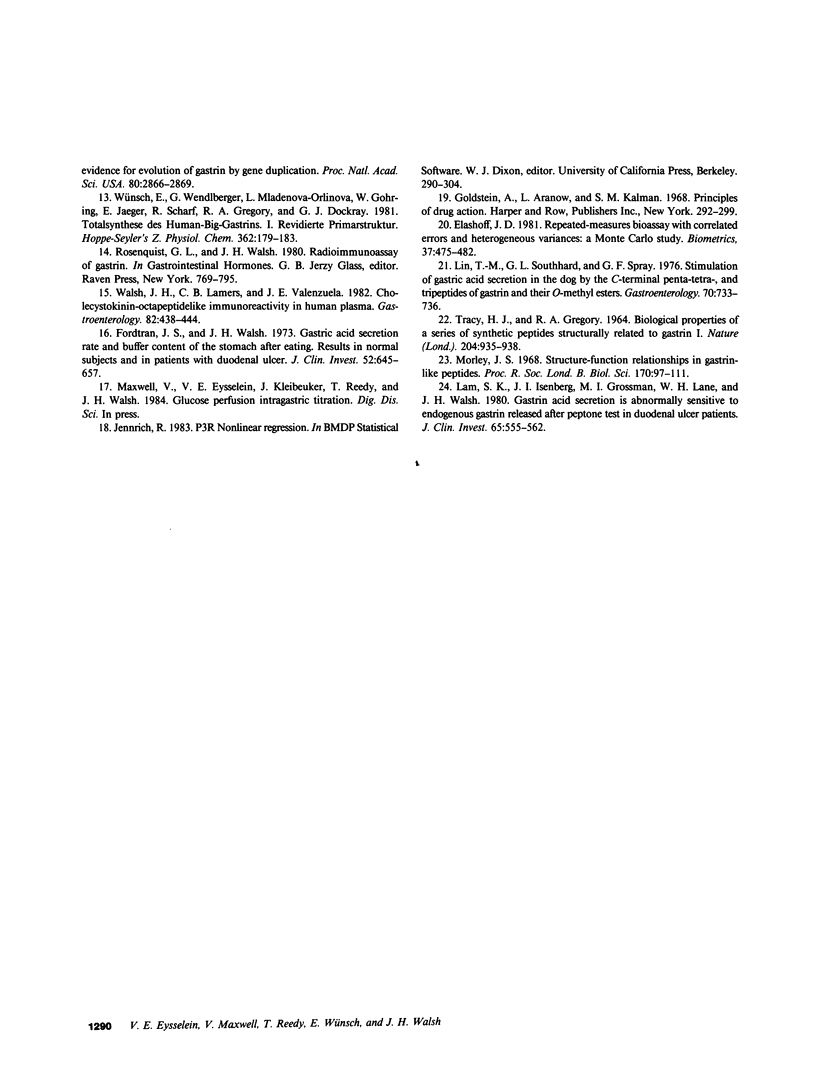
Selected References
These references are in PubMed. This may not be the complete list of references from this article.
- Boel E., Vuust J., Norris F., Norris K., Wind A., Rehfeld J. F., Marcker K. A. Molecular cloning of human gastrin cDNA: evidence for evolution of gastrin by gene duplication. Proc Natl Acad Sci U S A. 1983 May;80(10):2866–2869. doi: 10.1073/pnas.80.10.2866. [DOI] [PMC free article] [PubMed] [Google Scholar]
- Dockray G. J. Immunochemical studies on big gastrin using NH2-terminal specific antisera. Regul Pept. 1980 Dec;1(3):169–186. doi: 10.1016/0167-0115(80)90270-0. [DOI] [PubMed] [Google Scholar]
- Dockray G. J., Vaillant C., Hopkins C. R. Biosynthetic relationships of big and little gastrins. Nature. 1978 Jun 29;273(5665):770–772. doi: 10.1038/273770a0. [DOI] [PubMed] [Google Scholar]
- Elashoff J. D. Repeated-measures bioassay with correlated errors and heterogeneous variances: a Monte Carlo study. Biometrics. 1981 Sep;37(3):475–482. [PubMed] [Google Scholar]
- Fordtran J. S., Walsh J. H. Gastric acid secretion rate and buffer content of the stomach after eating. Results in normal subjects and in patients with duodenal ulcer. J Clin Invest. 1973 Mar;52(3):645–657. doi: 10.1172/JCI107226. [DOI] [PMC free article] [PubMed] [Google Scholar]
- Jensen D. M., McCallum R. W., Corazziari E., Elashoff J., Walsh J. H. Human lower esophageal sphincter responses to synthetic human gastrins 34 (G-34) and 17 (G-17). Gastroenterology. 1980 Sep;79(3):431–438. [PubMed] [Google Scholar]
- Lam S. K., Isenberg J. I., Grossman M. I., Lane W. H., Walsh J. H. Gastric acid secretion is abnormally sensitive to endogenous gastrin released after peptone test meals in duodenal ulcer patients. J Clin Invest. 1980 Feb;65(2):555–562. doi: 10.1172/JCI109699. [DOI] [PMC free article] [PubMed] [Google Scholar]
- Lamers C. B., Walsh J. H., Jansen J. B., Harrison A. R., Ippoliti A. F., van Tongere J. H. Evidence that gastrin 34 is preferentially released from the human duodenum. Gastroenterology. 1982 Jul;83(1 Pt 2):233–239. [PubMed] [Google Scholar]
- Lin T. M., Southyard G. L., Sprary G. F. Stimulation of gastric acid secretion in the dog by the C-terminal penta-, tetra-, and tripeptides of gastrin and their O-methyl esters. Gastroenterology. 1976 May;70(5 PT1):733–736. [PubMed] [Google Scholar]
- Morley J. S. Structure--function relationships in gastrin-like peptides. Proc R Soc Lond B Biol Sci. 1968 May 14;170(1018):97–111. doi: 10.1098/rspb.1968.0028. [DOI] [PubMed] [Google Scholar]
- Noyes B. E., Mevarech M., Stein R., Agarwal K. L. Detection and partial sequence analysis of gastrin mRNA by using an oligodeoxynucleotide probe. Proc Natl Acad Sci U S A. 1979 Apr;76(4):1770–1774. doi: 10.1073/pnas.76.4.1770. [DOI] [PMC free article] [PubMed] [Google Scholar]
- TRACY H. J., GREGORY R. A. PHYSIOLOGICAL PROPERTIES OF A SERIES OF SYNTHETIC PEPTIDES STRUCTURALLY RELATED TO GASTRIN I. Nature. 1964 Dec 5;204:935–938. doi: 10.1038/204935a0. [DOI] [PubMed] [Google Scholar]
- Taylor I. L., Dockray G. J., Calam J., Walker R. J. Big and little gastrin responses to food in normal and ulcer subjects. Gut. 1979 Nov;20(11):957–962. doi: 10.1136/gut.20.11.957. [DOI] [PMC free article] [PubMed] [Google Scholar]
- Walsh J. H., Debas H. T., Grossman M. I. Pure human big gastrin. Immunochemical properties, disappearance half time, and acid-stimulating action in dogs. J Clin Invest. 1974 Aug;54(2):477–485. doi: 10.1172/JCI107783. [DOI] [PMC free article] [PubMed] [Google Scholar]
- Walsh J. H. Gastrin heterogeneity: biological significance. Fed Proc. 1977 Jun;36(7):1948–1951. [PubMed] [Google Scholar]
- Walsh J. H., Isenberg J. I., Ansfield J., Maxwell V. Clearance and acid-stimulating action of human big and little gastrins in duodenal ulcer subjects. J Clin Invest. 1976 May;57(5):1125–1131. doi: 10.1172/JCI108379. [DOI] [PMC free article] [PubMed] [Google Scholar]
- Walsh J. H., Lamers C. B., Valenzuela J. E. Cholecystokinin-octapeptidelike immunoreactivity in human plasma. Gastroenterology. 1982 Mar;82(3):438–444. [PubMed] [Google Scholar]
- Wünsch E., Wendlberger G., Mladenova-Orlinova L., Göhring W., Jaeger E., Scharf R. Totalsynthese des Human-Big-Gastrins I. Revidierte Primärstruktur. Hoppe Seylers Z Physiol Chem. 1981 Feb;362(2):179–183. [PubMed] [Google Scholar]


